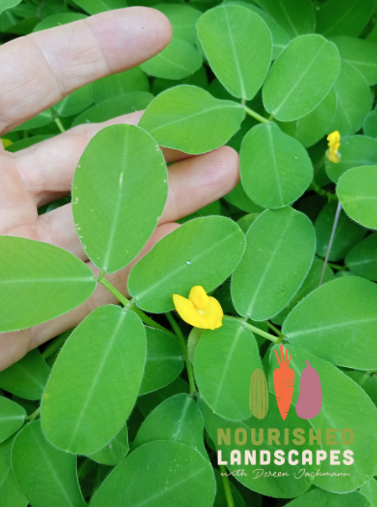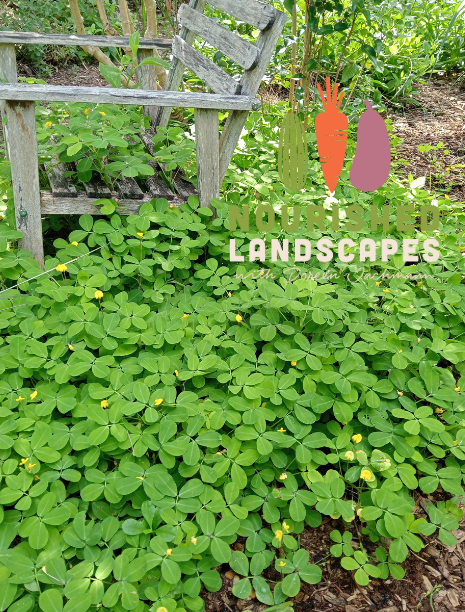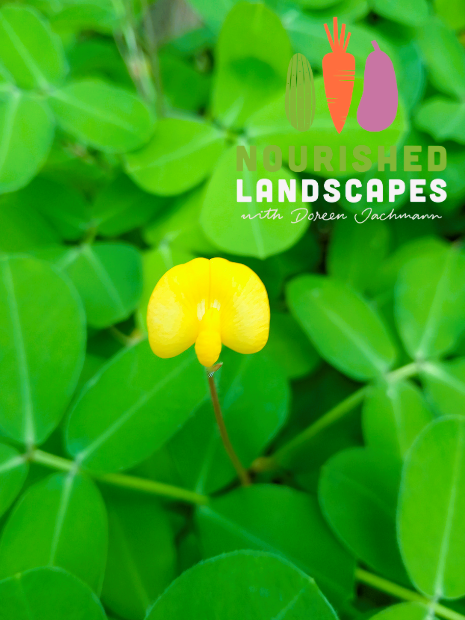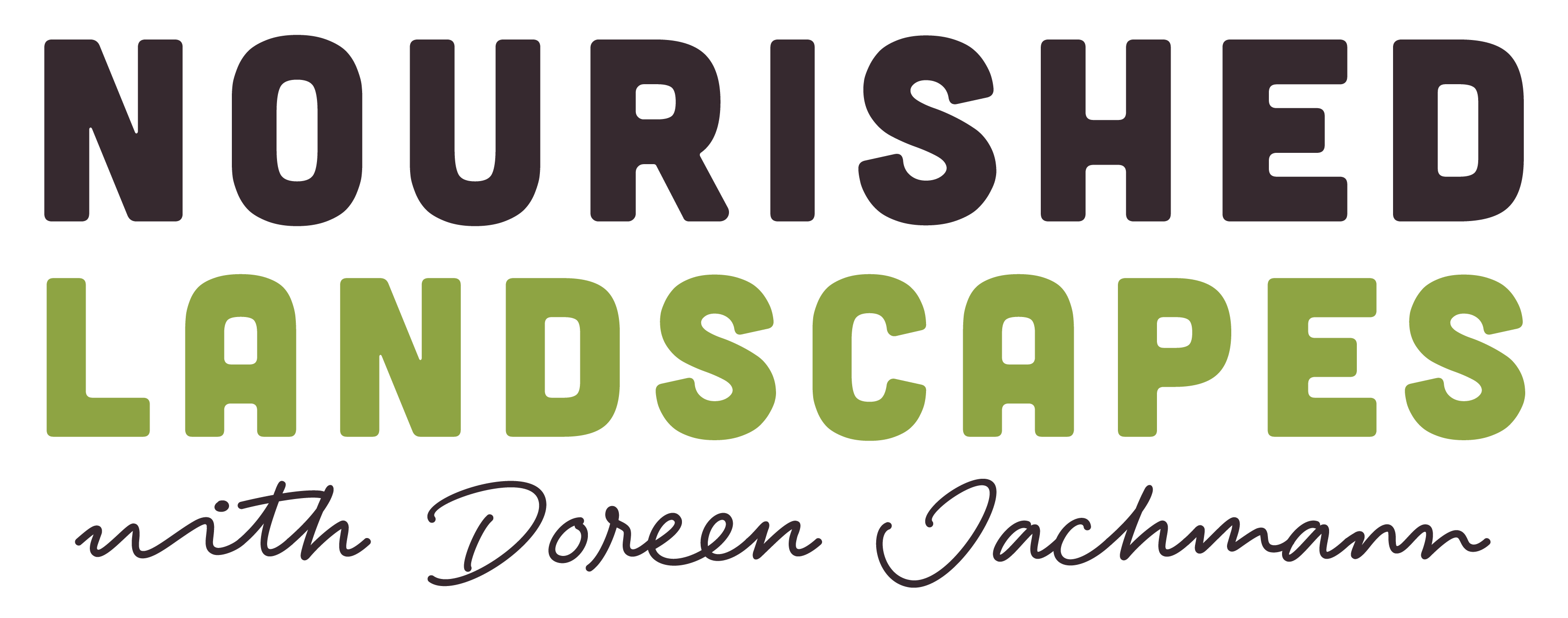Plant Profile Pinto Peanut (Arachis pintoi)
Common Names: Pinto Peanut, Forage Peanut, Perennial Peanut
Scientific Name: Arachis pintoi
Family: Fabaceae
Plant Type: Perennial ground cover

Physical Description
- Height: 10–15 cm.
- Spread: Can spread up to 2 metres through rhizomes and stolons.
- Leaves: Compound leaves with four oval leaflets, bright green in colour.
- Flowers: Small, bright yellow pea-like flowers bloom throughout the year in warm climates.
- Roots: Deep, fibrous roots that fix nitrogen in the soil.
Habitat and Distribution
- Native Range: South America, particularly Brazil.
- Cultivation: Widely grown in tropical and subtropical regions, including Queensland and northern New South Wales.
- Climate Zones: Thrives in warm and humid climates.
Growing Conditions
- Light: Prefers full sun but tolerates partial shade.
- Soil: Adapts to a variety of soils but thrives in well-draining, fertile soils with a pH of 5.5–7.5.
- Water: Requires regular watering to establish but becomes drought-tolerant once established.
- Temperature: Grows best in temperatures between 20–30°C. Sensitive to frost but recovers quickly in warmer months.
- Fertiliser: Low fertiliser requirement due to its nitrogen-fixing ability. Adding organic compost at planting can boost initial growth.
Uses in Permaculture
- Ground Cover: Forms a dense mat that suppresses weeds and protects soil from erosion.
- Nitrogen Fixation: Enhances soil fertility by fixing atmospheric nitrogen, benefiting companion plants.
- Erosion Control: Ideal for slopes and areas prone to erosion, as its roots stabilise soil effectively.
- Living Mulch: Serves as a living mulch under fruit trees or in garden beds, reducing evaporation and improving water retention.
- Animal Forage: Edible for livestock like chickens, pigs, and goats; high in protein.
- Pollinator Plant: Bright yellow flowers attract bees and other beneficial insects.
- No mow grass replacement: In low traffic areas.

Pinto Peanut in food forest makes an excellent ground cover.
Edible and Other Uses
- Edibility: While not commonly consumed by humans, the plant is non-toxic and safe for use as animal feed.
- Ornamental: Its lush green foliage and continuous yellow flowers make it an attractive ground cover for landscaping.
Propagation
- Cuttings or Stolons: The easiest and most effective method. Plant stolons or cuttings in moist soil, ensuring nodes are buried.
- Seeds: Less common but possible. Scarify seeds and sow in warm soil. Germination can take 1–3 weeks.
Seasonal Care
- Spring (September–November): Plant stolons or cuttings in well-prepared soil. Water regularly to establish.
- Summer (December–February): Growth accelerates. Water as needed, especially in dry spells.
- Autumn (March–May): Trim as necessary to manage spread and collect cuttings for propagation.
- Winter (June–August): May die back in frost-prone areas but regrows when temperatures rise.
Pests and Diseases
- Common Pests:
- Occasionally affected by aphids or grasshoppers but generally pest-resistant.
- Diseases:
- Rarely affected by diseases. Root rot can occur in waterlogged conditions.
Harvesting and Maintenance
- Trimming: Regular trimming helps maintain a tidy appearance and prevents overgrowth into unwanted areas. The trimmings can be used as green mulch.
- Replanting: Over time, thin patches can be replenished by transplanting stolons or cuttings.
Special Considerations
- Frost Sensitivity: Not frost-hardy but recovers quickly when warm weather returns.
- Invasiveness: Spreads rapidly under favourable conditions; use edging or barriers to control growth in confined spaces.
Pinto Peanut is a versatile and valuable addition to any permaculture system, providing ground cover, soil improvement, and forage benefits.
----------------------------------------------
About the Author
Doreen Jachmann from Nourished Landscapes has been providing permaculture services for over 10 years.
Doreen is passionate about helping people create sustainable and resilient landscapes.
Nourished Landscapes offer a variety of services, including:
* Permaculture design and installation
* Permaculture education, presentations and workshops
* Permaculture consulting
If you are interested in learning more about permaculture, please contact us today!





0 comments
Leave a comment
Please log in or register to post a comment